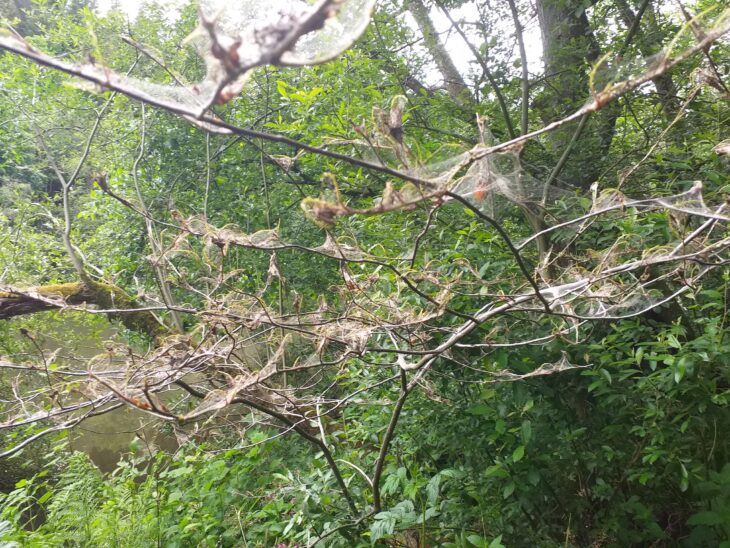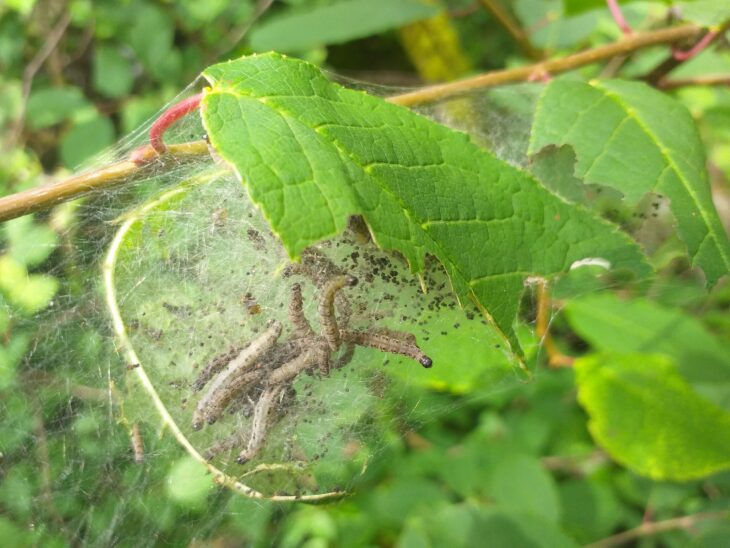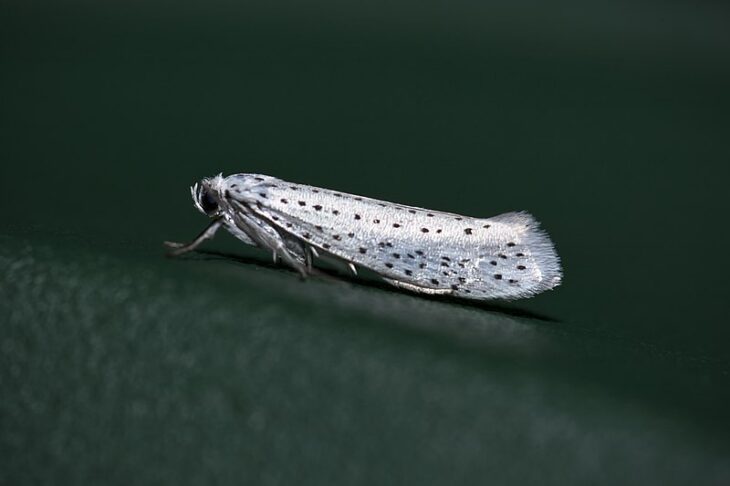Bumper year for bird cherry ermines
Some trees at the Falls of Clyde seem to have been wrapped in finely-spun cobwebs lately. But who (or what) is behind this phenomenon? Meet the bird cherry ermine moth.
If you’ve been taking your daily exercise in the Clyde Valley countryside lately, you could be forgiven for wondering if Halloween had come early…or that the lockdown has lasted longer than you realised. A lot of trees in the area are cloaked in eerie nets of silk, beneath which the leaves appear to be eaten away.

Don’t worry though – it’s still only June, and the trees will likely recover from their early-summer costume party. So is this the work of someone enterprising spiders? Well, no. Look closer and you’ll see that the webs are mostly draped over a particular species – the bird cherry (Prunus padus). This is because it is the food plant of the bird cherry ermine moth caterpillar (Yponomeuta evonymella).
Caterpillars have a variety of methods for defending themselves against predators – camouflage, mimicking other animals to make them look more threatening, or spraying formic acid, like the puss moth caterpillar (Cerura vinula)! Ermine moths deploy two other techniques: strength in numbers (known in ecology as ‘gregariousness’), combined with building protective webs like the ones we are seeing. This second strategy counters a problem created by the first: that greater numbers also means greater visibility to hungry eyes…

The ermine moth family contains several hundred species, although only eight are found in the UK. Of these, the bird cherry ermine has a more northerly distribution, so it’s no surprise we’re seeing them now around these parts. What is maybe slightly surprising however is just how many of the caterpillars there are. This is most likely the consequence of the mild, sunny spring we have had, leading to an abundance of fresh green leaves at just the right time for them to feast on.
Even in these numbers though, the damage they inflict shouldn’t be too problematic. It makes no evolutionary sense for a species to destroy the plant it relies on. Once the caterpillars turn into adult moths in the coming months, the bird cherry trees will start to recover – just in time for the adult moths to lay their eggs in them and start the cycle anew! The same trees don’t typically get hit with infestations year on year though, and conservationists are not worried about their impact.

So, if you spot one of these trees while you are out, don’t be alarmed – take a closer look at the miniature caterpillar haven inside the web – and keep your eyes peeled later in the year for the adults flying around. You’ll realise how the ermine moths got their name.
Patrick Endall, Falls of Clyde Seasonal Ranger
Help protect Scotland’s wildlife
Our work to save Scotland’s wildlife is made possible thanks to the generosity of our members and supporters.
Join today from just £3 a month to help protect the species you love.
Preface
Some trees at the Falls of Clyde seem to have been wrapped in finely-spun cobwebs lately. But who (or what) is behind this phenomenon? Meet the bird cherry ermine moth. …
